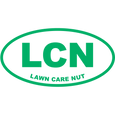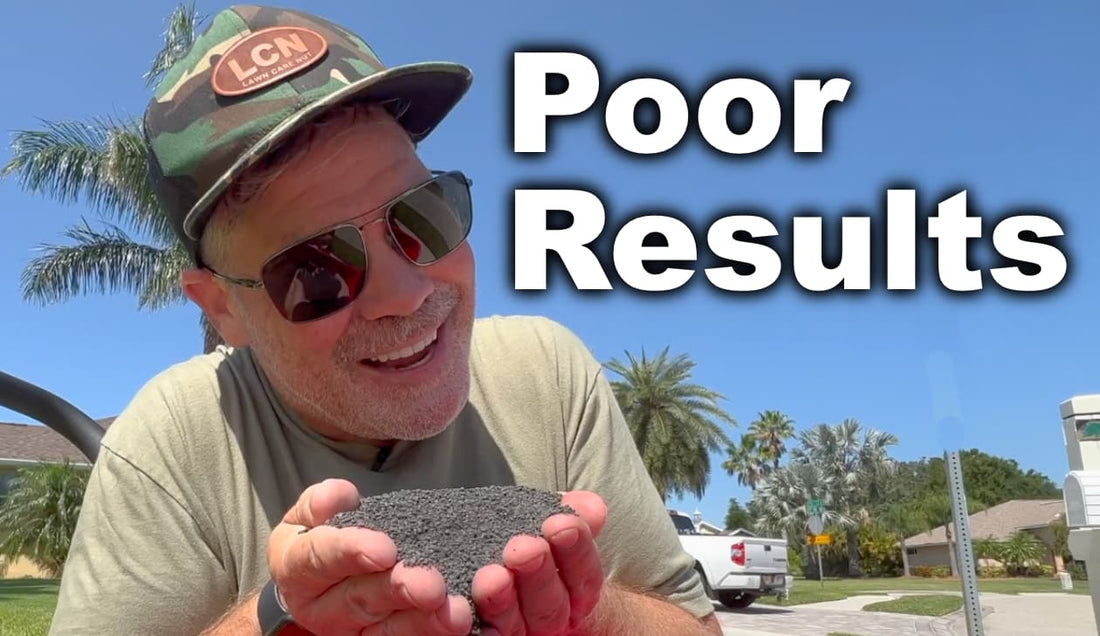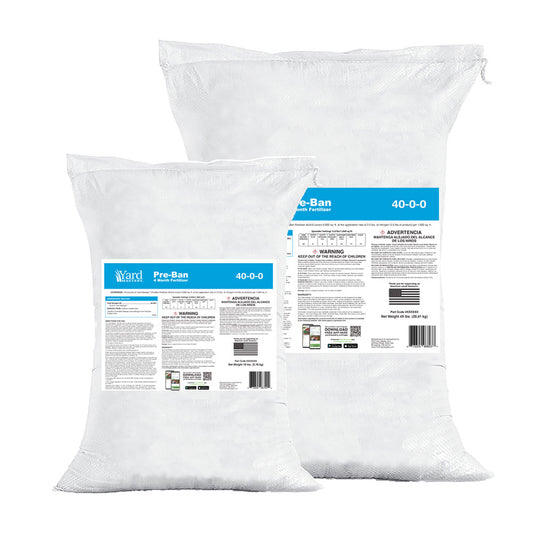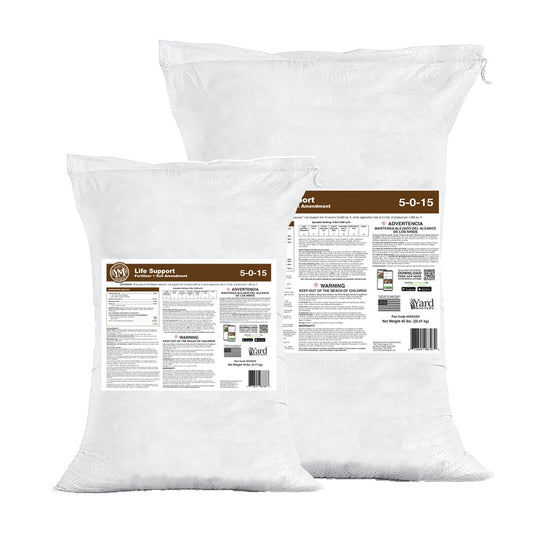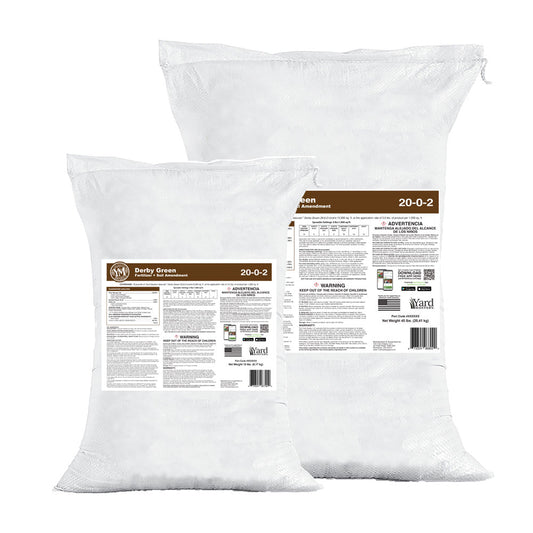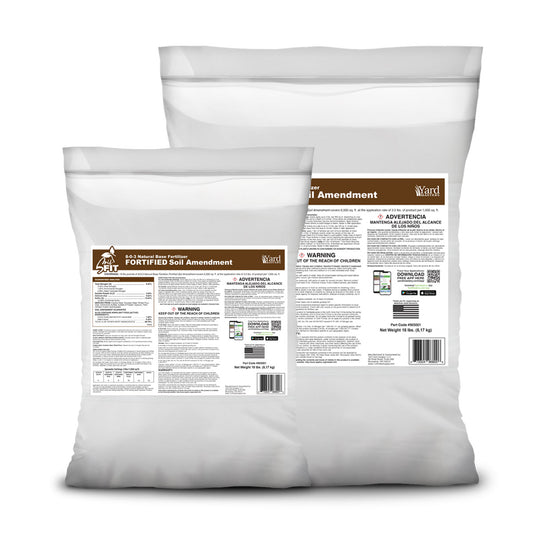Nitrogen drives the bus. If you want a green lawn, you will want to include nitrogen in your fertilizer. It’s the first number you see when you see those 3 numbers on the bag. In the case of Milorganite, it’s a 6-4-0 which means it is 6% nitrogen. When you look into the bag at those little black and gray pellets, 6% of everything there is nitrogen.
Watch this video to see the math, the application and the results from the “Florida Milorganite Rate”
Why does this matter?
It matters because the 6% refers to the concentration. If you need to give your lawn a good dose of nitrogen, and are using a product that has a low concentration of nitrogen like Milorganite does, then you will have to throw down much more in order to give the lawn what it needs. This is why you will hear me talk about “pounds on the ground” because ultimately that is what dictates how much nitrogen your lawn is getting.
In the video that I posted today, you heard me refer to the “application rate” on Milorganite for Florida and that is 6.15 lbs/1,000 sq ft.
I got that because on the bag it shows in Florida that the bag rate is 5,200 sq ft of coverage. Since the bag is 32 lbs I now have enough information to understand the suggested application rate by taking 32 and dividing it by the coverage of 5,200.
Now it’s important to realize that in lawn care, we use 1,000 sq ft as our standard unit of measurement. In other words, we break things down into 1,000 sq ft increments in lawn care.
The “bag rate” of Milorganite for Florida is 5,200 sq ft of coverage.
That means the bag can cover 5.2 sections that are 1,000 sq ft each.
Follow that? Now let’s do math:
Bag Weight: 32 lbs
Coverage: 5,200 sq ft
32/5.2 = 6.15
That’s how we arrive at the application rate of 6.15 lbs / 1,000 sq ft
How Much Nitrogen Are We Getting?
Since we know that our application rate is 6.15 lbs/1,000 sq ft, and that Milorganite is 6% nitrogen, that then tells us that we are going to be getting .37 lbs of Nitrogen across every 1,000 sq ft area.
6.15 x 6% = .37
As you can see from the video, that isn’t quite enough nitrogen to really do too much to push the lawn green. The St Augustine lawn in that video (my neighbor) has not been fertilized in well over a year so it’s starving. As you can see, that amount of nitrogen wasn’t enough to do too much.
How Much Nitrogen Does It Take To Turn A Lawn Green?
The answer to this question is highly subjective and determined by factors other than just nitrogen but for the most part, from my experience, I’d tell you that you need a good ½ lb of nitrogen to get a lawn to green up, and ¾ lb is better. I rarely find a need to apply more than ¾ lb of nitrogen to a lawn in a single application.
Keep in mind, we are doing 6 or 7 applications per year depending upon where you live and your grass type. The lawn gets 6 or 7 “feedings” per season and we want to spread the nitrogen out across those applications and we want to do it in a logical way.
For COOL SEASON LAWNS, I recommend higher nitrogen applications in spring and fall and lower nitrogen, higher potassium applications in summer.

For WARM SEASON LAWNS, I recommend lower nitrogen in spring and fall when the turf isn’t super vigorous, and higher nitrogen applications in summer when it’s running to take over ground and thicken up, pushing rhizomes and stolons.

This mirrors the natural growth habit of the turf.
Cool Season Lawns Yearly Total Nitrogen
Kentucky Bluegrass, turf type tall fescue and perennial ryegrass are thickening up and getting strongest in when the weather is mild: spring and fall. So it’s logical to fuel them during those times, so that is when I recommend higher nitrogen be applied.
In summer, for cool season lawns, I advise that you still apply some nitrogen, but not as much as spring or fall and for sure, you want to add in higher potassium for stress. There is no need to blast a cool season lawn with higher nitrogen in August when the heat and humidity are trying to send it into dormancy.
Overall, it’s 6 applications per year: 2 in the spring, 2 in the summer and 2 in the fall.
The 2 applications in spring will be 24-0-6 Flagship and following the bag rate there, you will be giving the turf ¾ lb of nitrogen for each 1,000 sq ft.
The 2 applications in summer, those are recommended to be 7-0-20 Stress Blend which gives the lawn just under ¼ lb of nitrogen for each 1,000 sq ft.
Then back to the fall time, those 2 applications are going to go back to 24-0-6 Flagship and bring ¾ lbs/N/1,000.
Overall for the season that is 3.5 lbs of nitrogen per 1,000 sq ft for the entire season.
That amount of Nitrogen is well within the recommended guidelines from Purdue University located in Indiana. I did an in depth podcast where I went into this, I encourage you to listen here:
https://youtu.be/6OXFYchkwFY?t=1777
Note: If you do my recommended winterizer (7th application) that will add another ¾ lb/N/1,000 which is used in the following season. That still keeps you well within the Purdue University recommendations for nitrogen.
Warm Season Lawns Yearly Total Nitrogen
It’s a little more variable for warm season turf since there is a big difference in South Florida and middle Texas although both areas have St Augustinegrass growing there.
There is also a difference in the grass types. Centipede doesn’t like quite as much nitrogen as Bermuda, for example.
But we can still make take a look at the overall nitrogen and see where it falls in.
In general you’ll get recommended 7-0-20 Stress Blend in early spring and later fall and 24-0-6 Flagship the rest of the time. In total it will be around 8 applications, again, dependent on how far north of south you are.
The early spring and later fall apps (2) will bring ½ LB/N/1,000
The spring/summer and early fall apps (6) will bring 4.5 lbs/N/1,000
That’s 5lbs/N/1,000 total for the entire season. That fits in nicely with the recommendations from the University of Florida and you can see me break that down in detail with screenshots in this podcast here.
https://youtu.be/6OXFYchkwFY?t=2964
Why Didn’t the Milorganite Green Up The Lawn Much
So back to this video. The reason is that Milorganite is a natural product and that means it releases its nutrients slowly as heat and microbes break them down. That’s great because it gives you no fear of burning the lawn, but it’s not so good when you are not applying very much in the first place. We are not even getting ½ lb of nitrogen with this application and remember, I said it takes that as a minimum to see a major change in the lawn’s color. It’s just a fact - you need more nitrogen to get a lawn green.
Does this mean I don’t use Milorganite anymore? Of course not, I still use it twice per year as a supplement to the rest of what I do. I like the carbon I get from it since it’s made up of dead microbes. See my Milorganite factory tour here to learn more.
Why Does 7-0-20 Stress Blend Work So Well?
So you may be asking “how come 7-0-20 Stress Blend greens up lawns so well when it’s only bringing ¼ lb/N/1,000?
The answer is that it contains some immediate release or “quick release” nitrogen that gives a lawn enough of a punch to green up. I have two nitrogen sources blended in.
Of the 7% nitrogen in the bag, it’s made up of:
Ammonium Sulfate, Urea and Polymer Coated Urea.
The Ammonium Sulfate or “AMS” as the cool kids refer to it, is only a small amount but it’s enough to give Stress Blend a fast visual result in most lawns. The Urea comes in soon after and the polymer coated urea is time-released over about 30 days.

But wait, there’s more!
Additionally, I have chelated iron that gives the lawn a deeper darker, blue-green color. You will not find any product at the store with chelated iron included.
But the real differentiator here is the 2% magnesium. I believe this is what makes lawns so green when Stress Blend is applied even with that lower amount of nitrogen.
Magnesium is actually a macronutrient and it’s often not even considered. It is the central atom in every chlorophyll molecule. According to this article from the University of Kentucky, Chlorophyll provides the green color in leaves, so a lack of Mg leads to a lack of green color (“chlorosis”), and turf can look pale even if other nutrients such as nitrogen (N) and phosphorus (P) are adequate.
And I believe that is the central reason why Stress Blend does so well greening up lawns even with that small amount of nitrogen included.
Overall, I hope you have learned something from this article and the linked videos. I really enjoy getting into the math and breaking it down so you know what results you can expect when you throw down too!
I’ll see you in the lawn!
